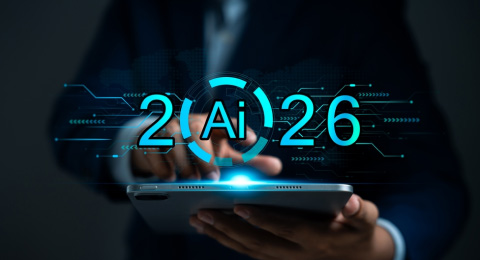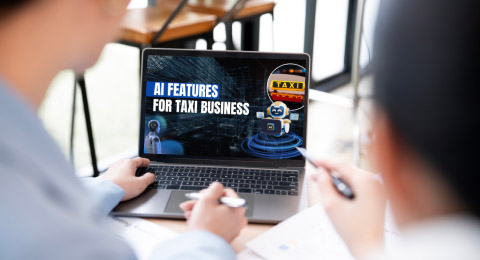
Businesses today are collecting more data than ever before. Data analysis is dominating major business decisions, from customer behavior to sales trends and market movements. But raw data alone doesn’t drive results. That’s where predictive analytics comes in. It helps companies turn data into foresight, allowing them to plan smarter, reduce risks, and personalize experiences.
- What is Predictive Analytics and How Does It Work?
- The Top Uses of Predictive Analytics Across Industries
- Benefits of Using Predictive Analytics in Business
- Challenges and Limitations of Predictive Analytics
- How to Implement Predictive Analytics in Your Business
- Future Trends in Predictive Analytics
- Conclusion
- FAQs
- What is predictive analytics, and how does it help businesses?
- What are the most common uses of predictive analytics in different industries?
- How much does it cost to implement predictive analytics in a business?
- Which tools or software are best for predictive analytics?
- What challenges should companies prepare for when adopting predictive analytics?
Understanding what predictive analytics is and exploring its benefits can open new doors for growth and innovation. This article breaks down the concept in simple terms and explains how businesses across industries are using it to make faster, more confident decisions.
What is Predictive Analytics and How Does It Work?
Predictive analytics is the process of analyzing past data with help of data mining, data modeling, artificial intelligence, and machine learning to identify patterns and use those insights to make informed decisions and forecast future outcomes.
Let’s consider that you run an e-commerce store. Predictive analytics can study your sales data to predict which products might sell more next month. If you’re running a restaurant, it can tell you which days will be the busiest.
It works step by step. A combined analysis of statistics, machine learning, and data analytics is involved in the process.
First, the model collects the necessary business data. This can be sales numbers, customer behavior, website visits, or even social media activity.
Next, it cleans and organizes that data to remove errors, fill in missing parts, and make it ready for analysis.
Then comes the most important part: finding patterns. The system looks at what happened in the past and searches for trends. For example, it might notice that sales always go up before a festival or that customers often buy certain products together.
Once patterns are found, predictive models are built using techniques like statistics or machine learning. These models act like smart calculators that can predict what’s likely to happen next.
Finally, the results are shown in simple reports or dashboards so you can make decisions, such as which product to stock more of, when to launch a campaign, or how to reduce risk.
The Top Uses of Predictive Analytics Across Industries
AI is booming like never before. Today we can find lots of AI business ideas that are making profits utilizing smarter technologies and algorithms. One such model is what we are discussing today. It is now used in almost every industry to serve customers better. Here is a list of a few:
Healthcare
In the healthcare industry, analyzing medical data to predict disease risk is a frequent challenge. For example, according to a Healthcare IT News report, about 27 % of healthcare leaders report they’ve already adopted, and about 44% are in the process of adopting predictive analytics. By using predictive analysis, doctors can analyze data for many patients within a few minutes. The model can predict how many patients might need surgery next month. Even epidemiologists can render sample data to predict which diseases are likely to rise in a certain area.
E-commerce
Have you ever come across a product on your Facebook page before even searching for it? That’s predictive analysis. Predictive models can study how you browse, buy, and even leave the cart at the payment stage. Using this data, models help businesses suggest the right products and set the right discount for maximum conversion.
Supply Chain Management
A supply chain connects suppliers, warehouses, transport, and stores. If one part slows down, the entire business suffers. Businesses can fix it using predictive analytics. By analyzing past shipping data, the model can predict the probability of supply chain disruptions in the near future. It allows businesses to plan early and avoid disruptions.
Banking and Financial Services:
Banks use predictive analysis to stay one step ahead of fraud and financial risks. The model can study thousands of transactions every second to spot anything suspicious. By analyzing service engagement data, it can also predict which customers might leave soon or who could be interested in a new offer.
Marketing:
One of the frequent uses of predictive analysis is noticed in the marketing industry. The model can go through web analytics and social media activities of a business to draw a practical buyer persona. For example, it can help a fitness brand market specific products in front of ideal customers for maximum conversions.
Want to Leverage the Power of Predictive Analytics in Your Business? Reach Out to Us with Your Requirements.
Benefits of Using Predictive Analytics in Business
It helps businesses turn data into valuable insights. When businesses use those insights properly, it can lead to significant benefits as follows:
Improved Decision-Making and Forecasting
Business planning often involves uncertainty. This removes much of that guesswork. By leveraging the power of AI, you can study patterns in past data to forecast future trends. You come to learn about probable sales peaks, demand drops, or customer churn in advance. As a result, leaders get ample time to do the needful.
Enhanced Customer Experience
It is very helpful if you want to provide personalized attention to customers. Imagine offering customers a discount coupon right when they are leaving the cart on the payment page! Such personalized experience leads to better engagement and long-term loyalty.
Better Risk Management
Every business is full of challenges. Predictive analysis can help you spot predictable challenges early. For example, it can identify signs of market fluctuations and detect credit defaulters through extensive data analysis.
Increased Operational Efficiency
Predictive analysis can help you optimize different aspects of your business operations. For example, let’s say inventory management, which is not easy. But what if you know which raw materials to order in exact amounts so that you never face shortages or wastage? Predictive analysis can do it for you. That means better operational efficiency.
Despite all these benefits, the model also comes with certain limitations and challenges.
Challenges and Limitations of Predictive Analytics
If you’re planning to use predictive analysis, you must understand cases in which it may produce faulty results or cause data anomalies.
Common Challenges
These are some common challenges and their reasons for occurrence in predictive models.
Poor Data Quality
The model predicts based on the input it received. If the data provided for analysis is incomplete, outdated, or inaccurate, the results will also be unreliable. That’s why it is important to collect clean data from multiple sources.
Poor Predictability
Designing a predictive model requires experts from data science, statistics, and machine learning. Even a single fault in any of these sections can disappoint you with faulty predictions or data anomalies.
Slow Processing
Sometimes, the predictive model does not integrate well with the old business systems. However, integrating AI into legacy AI systems is crucial. If there is a synchronization problem with the existing database or tools, the model slows down.
Limitations
Despite your 100% good efforts, predictive models, sometimes, are challenged by the following performance limitations.
No Guarantee Over Predictions
Let’s admit these are mathematical models that analyze data we provide. So, all probabilities of occurrence are based on past trends. It cannot anticipate sudden changes, like a pandemic or market crash. The likelihood of those events makes predictions less accurate.
Privacy and Security Concerns
There is always a risk of a data breach if the model is not protected by the necessary security protocols. It can raise privacy issues if sensitive customer information falls into the wrong hands.
High Setup Cost and Time
Setting up cloud-based analytics platforms may cost a minimum of $100,000 and take 6 months or more to develop. On-premise or full-stack systems may even need larger upfront investments and could take years to develop.
That’s why many companies prefer to partner with a reliable agency with an excellent track record in AI development services.
How to Implement Predictive Analytics in Your Business
Implementing predictive analysis is a cost-savvy process. Here is a simple step-by-step process to follow to avoid costly reworks later.
Step 1: Define the Problem
Always define the challenge you want to solve through the model. It will help you focus on the right data and the right questions.
Let’s assume the aim is to develop and implement a demand-forecasting model for an e-commerce company. The model is intended to predict weekly product sales to avoid stockouts and lower inventory costs.
The goal here can be to predict the next 8 weeks of sales for each SKU.
Step 2: Gather Data
Gather as much data as possible from different sources to paint a complete picture of your present business status for the model.
Considering the scenario discussed in the last stage, the model will require the following pieces of information:
- Sales history (date, SKU, units sold)
- Price history and promotions
- Website traffic and conversion rates
- Upcoming holidays, seasons, and weather (optional)
- Supplier lead times and current inventory
Step 3: Clean and Organize Data
Before feeding data to the model, double-check for any wrong entries, missing values, or inconsistent dates. It is better to aggregate data to the weekly level.
Step 4: Choose the Right Tools
Constantly fetching data from multiple sources and analyzing it is not something humans can do alone. That’s where you need tools. An ideal tool works in phases. First, it automatically fetches data from source points. Then, the entire data is verified and cleaned. Finally, it runs the data through machine learning to generate reliable predictions.
Many popular no-code tools and enterprise applications are available in the market. However, you need to evaluate them based on factors like:
- Data integration
- Scalability
- User expertise
- Accuracy
- Deployment options
Some popular tools are Power BI, Tableau, or cloud platforms from Google, Microsoft, and AWS.
Step 5: Build and Test Predictive Models
The next step is to build models to study your past data and suggest what’s likely to happen next. If you don’t have technical expertise, you can use no-code tools or work with a data expert. However, beta test models before applying them to your entire business.
Step 6: Analyze Insights to Take Actions
Analyze insights generated by the analytics and make small changes. Whether you decide to adjust your pricing or restock popular products, learn from your results and expand gradually.
Start with a small goal and learn how analysis process can help you plan, decide, and grow.
Future Trends in Predictive Analytics
Predictive models are going to evolve with more sophisticated technologies in the future. Let’s take a look at three future trends that are most likely to happen in predictive analytics.
Trend 1: Neuro-Symbolic AI
Neuro-symbolic AI consists of two models:
- Neural networks (deep learning) for pattern recognition
- Symbolic reasoning (logic-based rules) for decision-making
Neuro-symbolic AI-powered analytics can not only make predictions but also cite the logic behind them. This will be useful in industries that need human-like reasoning to take actions over the available data. So, industries like healthcare, finance, and law are going to benefit the most from this trend.
Trend 2: Synthetic Data
Synthetic data is artificial data created by computers to copy the patterns and trends of real-world data. However, it will not use any actual personal or sensitive information.
Synthetic data is going to be the answer for industries looking to train predictive models with real-time data without breaking privacy rules.
For instance, in healthcare, models often fail to detect rare diseases because the available data is limited. Synthetic data can mirror data of rare conditions to help predictive models learn better and make fairer decisions.
Trend 3: Automated Machine Learning (AutoML) 2.0
AutoML 2.0 is going to be the next big update. It allows business users to build predictive models using simple, no-code or low-code tools. That means it will take a smaller number of skilled AI professionals than before to handle the analytics. That also means you don’t need deep technical teams to leverage predictive models.
Conclusion
The secret to unlocking business growth lies in understanding the uses of predictive analytics and how it can transform everyday decision-making. Once you know what a predictive model really is and how it works, you can start applying it to forecast trends, improve customer experiences, and reduce risks. The next step is to bring these insights to life with intelligent systems that learn and adapt.
Start that journey with our AI development services, designed to help you build AI-powered, data-driven solutions that shape the future of your business.
FAQs
Predictive analysis is a method of identifying the likelihood of future events in a system. In business, predictive analysis can be used to understand what your customers need and why. The model combines historical and current data of your business to help you further optimize user experience on the go.
Predictive analysis is most commonly used in the healthcare, finance, e-commerce, and supply chain management industries. On-demand industries specific to transportation and communication also leverage predictive analysis.
The cost to implement predictive analytics in your business may cost anywhere between $10,000 and $100,000 per year. The total cost can be broken down into three parts: human cost (72%), service costs (16%), and tool-related costs (12%).
If you are looking for developer-focused tools, try Google Vertex AI, H2O.ai, or Databricks Machine Learning. Otherwise, go for popular enterprise-focused tools like SAS Viya, IBM SPSS Modeler, Alteryx, Microsoft Azure Machine Learning, SAP Analytics Cloud, or Oracle Analytics.
First of all, working with a predictive model requires having experts from data science, statistics, and machine learning in your team. That may increase the operational costs. Sometimes, predictive models may give faulty predictions if the data provided is inaccurate, outdated, or incomplete. If the model fails to sync properly with existing tools, the processing may get delayed.






